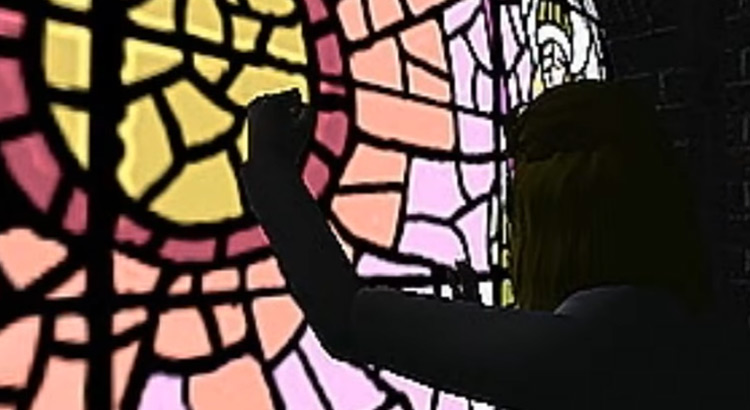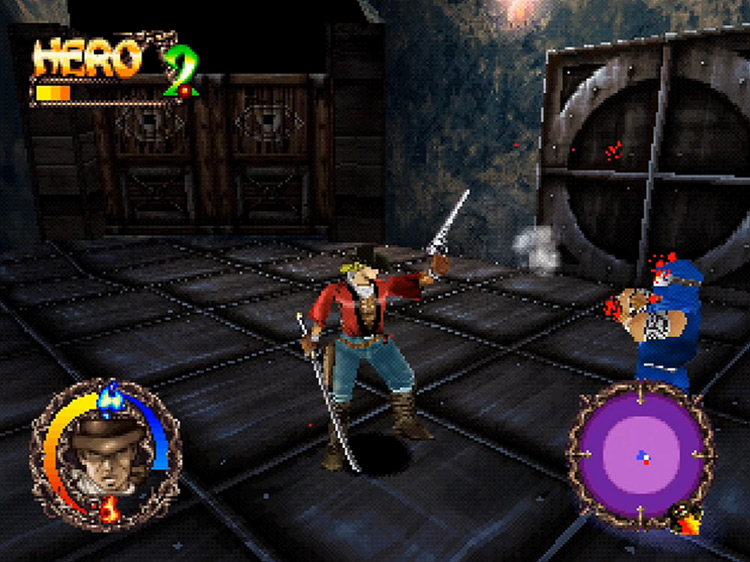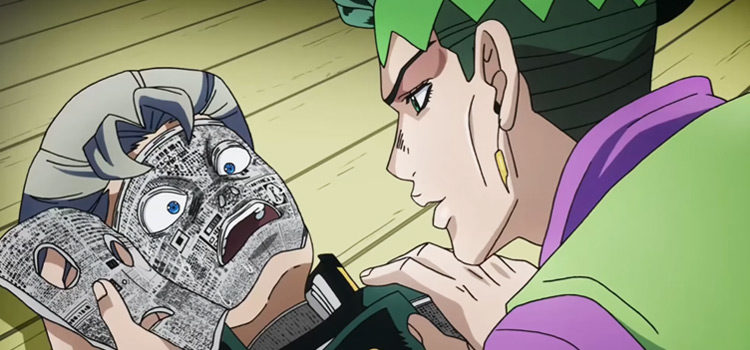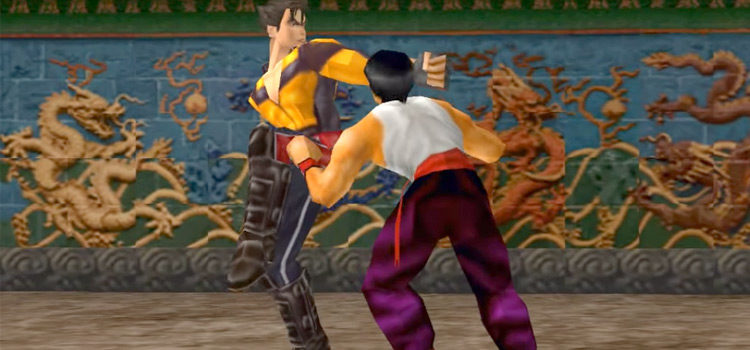16 Weirdest & Strangest PS1 Games Ever Made
This post may contain affiliate links. If you buy something we may get a small commission at no extra cost to you. (Learn more).
The PS1 was my first 3D console. I got the N64 shortly after, but the PlayStation’s massive video game library (and access to imported Japanese games) kept it relevant for years after its release.
One of my favorite things about the PS1 is how you could always end up in the video game equivalent of Youtube’s strange side that you only reach after letting the autoplay run for hours.
If you weren’t careful while buying discounted or used games, you’d be privy to some real weird stuff. In fact, it wasn’t even uncommon in the PSX days.
And in retrospect, the console wouldn’t have been the same without these unusual games. We’ll be taking a look at some of the best.
16. Speed Freaks (1999)

Our first entry isn’t weird because of its gameplay, but because of its aesthetic and art direction.
Developed by Funcom Dublin, Speed Freaks is the PS1’s answer to Mario Kart – or rather, it was competing with Crash Team Racing for the spot.
What’s so weird about it is the pilots’ design, which you can tell just from looking at the cover.
They’re like the middle ground between a huge baby and Rayman, which is a bit horrifying.
Luckily you’re only ever looking at their backs, and it’s not so bad. The gameplay is pretty nice. And while it’s not the tightest racer, the courses are really fun to traverse.
It’s about the journey rather than the destination.
15. D (1996)

Warp initially developed D for the 3DO as one of the console’s many interactive movie games. It eventually made it to the PS1 in a pretty competent port of the original.
In this horror game, you’re tasked with exploring a hospital and finding your father, who’s barricaded himself in after a presumed killing spree.
Things take a turn and become more Silent Hill-y once you’re inside, though. And what used to be a hospital turns into a dank medieval castle.
You’ll solve puzzles to progress further into the castle toward one of the game’s multiple endings.
With psychedelic visuals, a creepy atmosphere, and human models sitting right in the middle of the uncanny valley, this game has weirdness for days.
And this is part of an odd horror trilogy with an interesting history.
14. The Misadventures of Tron Bonne (2000)

Some games are weird not for their content, but for the sole reason of existing.
In Capcom’s Mega Man franchise, Tron Bonne is the only character other than Zero (from Mega Man X) to ever star in their own spin-off game.
This is weird not only because Mega Man Legends was somewhat obscure, but because Tron Bonne is a girl – and strong female protagonists weren’t all that common back at the time other than Lara Croft.
Lucky for everyone, the game is pretty good. Every level features different gameplay mechanics, making it remarkably varied. It’s got action, some challenging puzzles, and the story weaves into Mega Man Legends perfectly.
Plus, Tron Bonne is adorable.
13. Rising Zan: The Samurai Gunman (1999)

UEP System’s Rising Zan is not only one of the best games on the PS1, but one of the weirdest due to its mix of Western and Eastern aesthetics and motifs.
The game follows a sort of samurai cowboy going against demon ninjas, evil robots, and lots of other weird enemies with decidedly Japanese origins – all in the American Wild West, of course.
Nobody said you couldn’t follow the Bushido code with a revolver.
12. Pepsiman (1999) (JP)

Pepsiman was Pepsi’s superhero mascot in Japan during the second half of the 90s, starring in TV commercials where the character would deliver a can of Pepsi to a thirsty bystander before getting trashed in increasingly ridiculous accidents.
And they made a video game about this guy.
The game follows the same formula, except it’s flipped around.
You’ll control a running Pepsiman as he narrowly avoids oddly inconvenient hazards on your way to deliver a fresh can of Pepsi. It’s the world’s most bizarre Temple Run clone – except it came out over ten years before the hit app.
To nobody but developer KID’s surprise, the game didn’t sell well – but it’s still pretty entertaining, and most people who owned it remember this wild game quite fondly.
11. Baldies (2003)

Considering I’m a die-hard RTS fan, and most importantly a bald man, it’s surprising I’d never heard of Baldies before testing it for this ranking.
Developed by Creative Edge Software, the title combines battle simulation and god game mechanics. Your objective is to raise and lead an army of “baldies” – hairless egg-shaped people – as they tried to subdue the “hairies” and conquer the entire known world.
PS1 Baldies is a port of the PC version, though the online multiplayer is sorely lacking.
The game can be played just fine with a regular PS1 controller, but it also supports the use of the PlayStation Mouse for an experience closer to the PC version.
10. Hogs of War (2000)

Another whimsical wargame comes in the form of Hogs of War, which took the turn-based artillery gameplay of the Worms franchise and took it to 3D.
Other than innovative and engaging gameplay, the game shines for its appealing 3D graphics goofy humor. It includes pigs from all around the world with stupid names and silly voices, which makes blowing them up funnier than I’d expected.
While goofy, the game is also pretty strategic – from customizing your pig soldier squad before each battle to carefully planning each shot to keep the upper hand.
Get it for some fantastic couch multiplayer.
9. Bishi Bashi Special (2000)

Not to be confused with the 1998 JP-only title of the same name, Konami’s Bishi Bashi Special (EU) is a compilation of the two first games in the franchise to ever come out on PS1 – translated and released for Western audiences.
The game is pretty similar to WarioWare.
It consists of several mini-games with simple controls explained briefly at the beginning of each showdown. These fast-paced microgames are pretty daunting at first, because it’s not always clear what you’re supposed to do.
It’s part of the charm.
The game has gorgeous hand-drawn anime graphics for the most part. But each subsequent microgame can have a different art direction than the last one. It’s hectic, varied, and a lot of fun.
8. Wild Arms (1997)

Much like Rising Zan, Wild Arms makes it onto the list thanks to its unusual mix of the American Wild West aesthetic with something completely different – in this case, sci-fi.
The game takes place on Filgaia, a dying world that’s oddly similar to the American Wild West – except for the high-tech weaponry and other sorts of sci-fi/steampunk staples.
This title follows the Dream Chasers, a band of thrill-seekers scouring the world searching for adventure and fortunes earned by risking their lives. Now they’re about to get involved in something bigger than themselves.
The graphics are nothing to write home about. But the fantastic writing, incredible soundtrack, and memorable opening cinematic elevate this game to greatness.
7. Skullmonkeys (1998)

Developed by The Neverhood as a sequel to their eponymous 1996 game, Skullmonkeys sets itself apart from other Action/Platformers at the time with its unusual and highly-detailed graphics.
The fluid animation of pseudo-3D characters and environments was achieved through claymation techniques, using the same models as those seen in the game’s cutscenes.
The claymation style gave rise to some bizarre constructs – including a boss that’s a photorealistic human head with limbs and another smaller head on top.
It may be weird, but it’s also one of the most artistically accomplished titles on the console.
6. Fluid (1998)

When you think of making a game focused on music, you’d think of a rhythm game like Guitar Hero or the DDR series – but that’s not the only way to go about it.
Opus developed fluid as a simple interactive sound lab where players could create and record their own mixes by arranging the game’s samples and beats.
These samples were collected by controlling a dolphin and swimming through several environments on-rails. And these samples would be automatically added to your menu while creating “grooves”.
Your mixes could even be saved to the memory card and played back while swimming as the aforementioned dolphin. Thanks to the relatively complex and powerful mixing tools, you could make some solid tunes in this game.
5. Vib-Ribbon (1999)

If you prefer to sit back and listen to music (rather than create it) then NanaOn-Sha’s Vib Ribbon is the perfect music game worth trying.
It’s a sort of rhythm platformer where an anthropomorphic bunny traverses levels based on different songs.
While the game comes with some nice tunes to try out, the idea is for you to take out the game’s CD from the PS1 after loading it one time, then replacing it with your favorite music CD. The game then creates levels based on your music of choice.
It was a smart way of using the PS1’s music-playback capabilities, and the whole process felt pretty mystical and mysterious back when I was younger.
4. N20: Nitrous Oxide (1998)

The Tube Shooter genre has always been famous for its excellent, vibrant visuals and fast-paced gameplay, but in 1998, nobody was expecting something like N2O.
The game is a bit like Atari’s 1981 arcade hit Tempest, but on steroids. Or rather, on some strong hallucinogenics.
After all, the game has you collecting shrooms and other… strange items, along with coins on every level.
One of the game’s best parts is the soundtrack, which was specially recorded by the American music duo Crystal Method. In fact, the game could be played back on any regular CD player like any standard music CD.
3. LSD: Dream Emulator (1998) (JP)

Another hallucinogenic-related game that left a mark on our memories is LSD: Dream Emulator.
Asmik Ace Entertainment developed it as an adaptation of a Dream Journal kept by one of their employees at the time. Over 20 years of bizarre dreams were boiled down to a strange, ethereal exploration game.
It’ll let you freely traverse a variety of surreal locations filled with whimsical creatures that would fit in with everyone else during an intense LSD trip.
And get this: even as a Japan-only title, it finally got an English release.
Well, fan release but still.
This game is proof that the vaporwave aesthetic has been a thing for over 20 years – we just didn’t know it yet.
2. Screaming Mad George’s ParanoiaScape (1998) (JP)

Screaming Mad George is the stage name of Joji Tani, a Japan-born American that had made a name for himself in the film industry as the author of terrifyingly realistic monster make-up and props for horror films.
His disturbed mind was at the front of ParanoiaScape, developed by Mathilda as a fusion between pinball gameplay – in the first person, mind you – and a horror ambiance similar to the hellscapes conjured up by the disturbed minds of schizophrenia patients.
It can be a bit daunting.
But if you can hold on to your sanity as you maneuver your ball through these grotesque environments, it’s an unforgettable experience.
1. Incredible Crisis (2000)

The title that merges the most fun and weirdness into the same PSX package: Polygon Magic’s Incredible Crisis.
This fantastic game follows a working-class Japanese Family as they struggle to get ready for Grandma’s birthday. Yes, this is a real video game.
They’ll try to make it to her house in time, only to be stalled again and again by the most far-fetched situations you can think of.
The gameplay is reminiscent of WarioWare, as it includes countless fast-paced microgames where you’ll guide our heroes past whatever hurdle fate throws at them.
My favorite part is that it features music from the Tokyo Ska Paradise Orchestra – not super weird there, but a total win in my book.






